There are many ways to be prepared for when SHTF. One way is to plant your own garden. Another way is to learn the uses of plants that are already growing native in your area so you can forage what you need from nature.
If you live in the eastern US or the southern parts of eastern Canada an important tree to know is Slippery Elm, Ulmus rubra. While nowadays Slippery Elm is primarily known for its medicinal uses, it is also edible and useful for artisanal crafts which should put it high on your list of plants to find growing in your area.
The traditions of using Slippery Elm go way back. Native Americans used the tree medicinally and the Founding Fathers knew the value of it as well. It is said that George Washington’s troops survived the winter at Valley Forge by eating a gruel made from Slippery Elm bark. Let’s not forget all the wonderful benefits this tree can offer us.
Related: The Tree That Every Prepper Should Grow In His Backyard
Identification
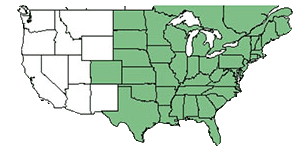 Slippery Elm is a deciduous tree that grows between 40-60 ft in height. It grows as far south as Florida, as far west as Texas, and its range stretches in Quebec in the north.
Slippery Elm is a deciduous tree that grows between 40-60 ft in height. It grows as far south as Florida, as far west as Texas, and its range stretches in Quebec in the north.
Slippery Elm has oblong, serrated leaves that are 4-8 inches in length and rough on top.
In spring the leaves can have a reddish tinge that turns to green in summer. In fall the leaves are yellow. It has a red heartwood that is good for making fence posts. Slippery Elm can be differentiated from other elms by the slimy inner red bark that is used medicinally.
Harvesting
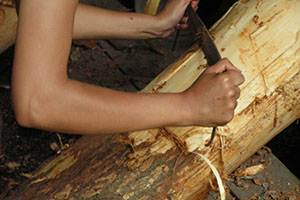 Slippery Elm bark is best harvested in spring between March and June. During this time it will have the highest quality and be easiest to remove and process.
Slippery Elm bark is best harvested in spring between March and June. During this time it will have the highest quality and be easiest to remove and process.
Since you want the inner bark, you will want to harvest from branches that have a minimum of 1-inch diameter. Any smaller won’t yield enough inner bark to be worth your time.
You can harvest from branches or whole trees. If you are planning on cutting a tree for the wood, definitely take the time to harvest the bark. Once you have your branches you want to remove the bark in vertical strips. Insert a knife to get it started. Once the branch is scored you should be able to pull the bark away easily.
The outer bark has a corky texture that is soft to the touch. In the inner bark is fibrous and a little slippery, giving the tree its name. Peel the outer bark away from the inner bark, it will come off in chunks rather than strips. Discard the outer bark. It is the inner bark you want. You can dry the strips of inner bark by either hanging them or placing them on racks and keeping them in a warm, dry place for several weeks. If you place them on racks make sure to turn the strips periodically so they don’t mold.
Medicinal Uses
Slippery Elm bark can be used medicinally as well as being edible. Most commonly we associate Slippery Elm with sore throats and coughs. That is because it contains mucilage, a sticky substance that coats your throat and makes it feel better. But mucilage coats more than just your throat. It also coats your stomach, making it a great choice for digestive and intestinal problems too.
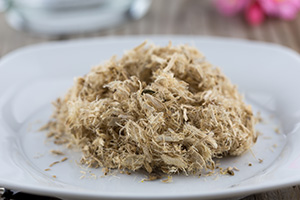 You can make either Slippery Elm tea or lozenges. For tea, you can use small strips of dried bark as is but to make lozenges you will want to make a powder.
You can make either Slippery Elm tea or lozenges. For tea, you can use small strips of dried bark as is but to make lozenges you will want to make a powder.
To do this simply put the bark in a coffee or spice grinder and grind it until it is a fine powder. To make tea simply add 2 tablespoons of small strips of bark to 16 ounces of boiling water. Steep for 5-7 minutes. Strain out the bark strips. Add honey or another sweetener to taste.
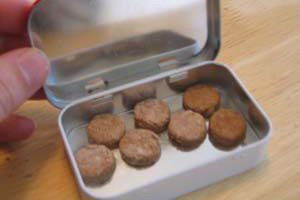 Lozenges are great for soothing a sore throat. Usually, you can feel relief immediately. They can be a great choice for an upset stomach as well. Slippery Elm lozenges are easy to make at home and great to have on hand for quick relief. All you need is a little honey, water, and slippery elm powder.
Lozenges are great for soothing a sore throat. Usually, you can feel relief immediately. They can be a great choice for an upset stomach as well. Slippery Elm lozenges are easy to make at home and great to have on hand for quick relief. All you need is a little honey, water, and slippery elm powder.
- Mix 1 TBSP honey with ¼ cup of water
- Place ½ cup of Slippery Elm powder in a small bowl
- Slowly drizzle honey water mixture into the powder
- Mix until it forms a kneadable dough (add more water if needed)
- Roll the dough out thin and cut individual lozenges (a small bottle cap makes a great cutter)
- Place on a screen to dry overnight.
- Store in an airtight container, in a cool, dry, dark place
Survival Food
 The bark is also highly nutritious, so you can make a porridge that is easy to eat and is ideal for people experiencing a loss of appetite due to digestional problems. There are many variations to this porridge depending on what other ingredients you have on hand. The most basic way is simply to mix Slippery Elm powder with boiled water until you have an oatmeal-like consistency.
The bark is also highly nutritious, so you can make a porridge that is easy to eat and is ideal for people experiencing a loss of appetite due to digestional problems. There are many variations to this porridge depending on what other ingredients you have on hand. The most basic way is simply to mix Slippery Elm powder with boiled water until you have an oatmeal-like consistency.
However, to enhance the flavor I recommend adding milk, honey, and fruit or spices. Here is a basic porridge recipe:
 2 TBSP Slippery Elm powder
2 TBSP Slippery Elm powder- ¼ cup of water
- ½ tsp cinnamon
- ¼ tsp nutmeg
- ¾ cup milk
- 1/2 TBSP honey
Mix all ingredients except the honey in a small pot over low heat. Stir constantly until it is at a simmer. Add honey. Enjoy.
Survival Uses
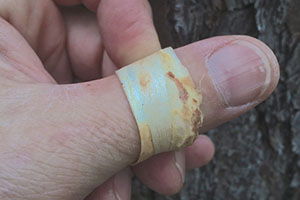 Slippery Elm can be applied topically as well. Historically Native Americans used slippery elm to treat wounds and skin irritation. Supposedly, they simply wrapped moistened strips of bark over the wounds.
Slippery Elm can be applied topically as well. Historically Native Americans used slippery elm to treat wounds and skin irritation. Supposedly, they simply wrapped moistened strips of bark over the wounds.
It has also uses beyond just the bark. The heartwood is straight so it makes good fence posts. But Slippery Elm is also easily bendable with steam. It has been used traditionally to make bows and other artisan crafts.
However, if you are harvesting a tree for the lumber make sure you don’t neglect to harvest the bark as well. It is always best to uses as much from the tree as possible.
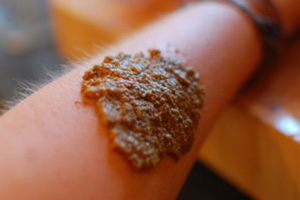 Slippery Elm was also once a common treatment for gunshot wounds. To use Slippery Elm externally for wounds or skin problems, you will want to make a poultice.
Slippery Elm was also once a common treatment for gunshot wounds. To use Slippery Elm externally for wounds or skin problems, you will want to make a poultice.
For this, you want to use a coarser powder. Simply mix the coarse powder with water until it forms a paste.
After that, apply directly to the affected area. Cover with a clean cloth. The poultice will draw out any toxins and aid in healing.
Once, all the many uses for Slippery Elm were common knowledge and Slippery Elm bark was found in most home’s herbal apothecary. Unfortunately, that knowledge is being lost. For us to survive SHTF is important we learn and cherish the traditional knowledge and make use of the resources we have growing in our backyards.
You may also like:
 The 5 Most Common Edible Weeds In Your State
The 5 Most Common Edible Weeds In Your State
How to Make Bark Bread from a Tree that Grows on Almost Every Street in America (Video)
7 EMP Proof Items for Your Bugout Bag
Urbanites Moving To Rural Paradise Ruining It For The Locals

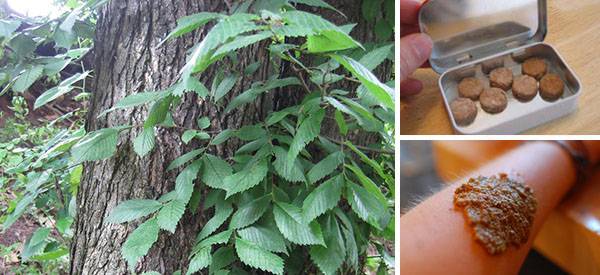
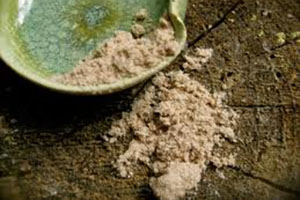 2 TBSP Slippery Elm powder
2 TBSP Slippery Elm powder









If you take it from the tree instead of branches you have already removed, you must be careful to only cut it in vertical strips. If you cut all the way around the tree, you will kill it.
Wondering if a Slippery Elm would grow on the southern Oregon coast. I would be willing to try. Have lots of sun in a protected area, but perhaps it would not like all the rain. I might plant it on a high spot for drainage. Anyone out there on the west coast every tried it. Would appreciate hearing your experience and data on the tree. Thank you, Brenda
Brenda: Some sources say yes, but not native or common, others say no. It’s hardy down to -4 F, and likes a lot of moisture. You’re in Zone 8A or -B, and that’s plenty warm for it. niio
Excellent article! This is the kind of article that makes Ask A Prepper such an excellent resource! Thank you Claude and thank you Rachael!
Nice article Rachael! Informative and well presented.
Slippery elm, Echinacea, American Ginseng, Peyote, and Psilocybin cubensis are among a number of wild plants and fungi threatened by illegal commercial harvesting. It is frustrating to see these gifts heavily exploited for the commercial gain of a few, also very frustrating that the supplement companies often sell improperly prepared products with ridiculously high recommended dosages. Grrr…
From Foraging Texas: “The seeds appear in the spring and look like little fried eggs to me. They have a small, flat, circular seed encased in a flat, papery, circular pod. Collect the whole pod then roast them. This will make the outer pod crisp and easy to remove by grinding the pods between your hands and winnowing the useless chaff from the nutritious seeds. Once collected, the seeds can be ground into a flour or boiled like a porridge.”
The seeds, at least in Texas, often appear as early as February. The trees seed heavily but I doubt the energy gained from eating them equals the energy spent harvesting and preparing them.
Hard to tell Slippery from American Elm. For older trees the American branches lower and the spread is symmetrical, Slippery branches much higher and the limbs are less symmetrical. American elm leaves are either smooth or feel rough when rubbed in one direction, Slippery Elm leaves are rough in both directions. And you can usually tell if the inner bark is slippery just breaking the tip of a twig.
I planted one of these in front of my Mom’s house and it made a large spreading beautiful shade tree for 45 years until we sold the house and the new owners had it removed.
Before I started taking standardized Echinacea and I had colds and flu all the time I tried slippery elm for my sore throat but found the mucousy residue of it very unpleasant. A sip of cheap white Tequila is the best sore throat treatment I’ve found.
Most of the elms in my area are gone now from the Dutch Elm outbreak years ago. Beautiful trees very sad.
Tasty tree. We used to plant the seeds in the woods. If the deer didn’t kill them, they lived quite a while. But, most things in the woods are good. Black walnut hulls are antifungal and so on. Living in the Swamps of Pennsylvania for quite a while, I found that out in a hurry. Like Pappy, I caught ringworm from jersey cattle. It works! niio
Mom always had a slight post nasal drip that kept her throat rough. She aIways carried slippery elm throat lozenges. They really helped.
A picture of the leaves would have been quite helpful.
Is there a reliable source for seedlings?